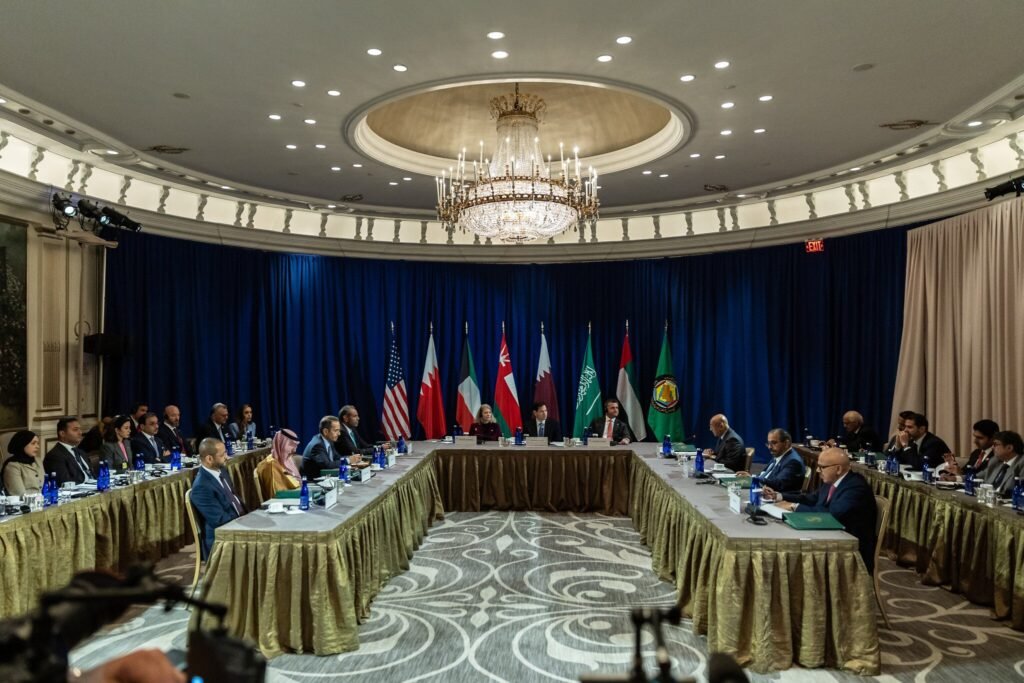U.S. Proposal for Ending the Gaza Conflict: A Pathway to Palestinian Statehood
Introduction
The ongoing conflict in Gaza has spurred various diplomatic initiatives aimed at achieving peace and stability in the region. A newly unveiled U.S. proposal offers an intricate framework to potentially resolve the enduring crisis, fostering a future pathway for Palestinian statehood. This comprehensive plan encourages Palestinians to remain in Gaza while setting forth a detailed 21-point agenda to address pressing issues such as security, governance, and humanitarian aid.
Key Highlights of the U.S. Proposal
-
Encouragement for Palestinians to Stay
The proposal marks a significant shift in U.S. policy, especially compared to previous discussions about relocating Gaza’s population. By explicitly encouraging Palestinians to remain in their homeland, the U.S. aims to provide a sense of stability and investment in their own future. -
Pathway to a Palestinian State
One of the core elements of this proposal is the vision for a future Palestinian state that emerges after critical infrastructure is rebuilt and the Palestinian Authority undertakes necessary reforms. This suggests a renewed commitment, marking a departure from previous U.S. administrations’ reluctance to endorse the two-state solution. - Dialogue for Peaceful Coexistence
Central to the proposal is the establishment of sustained dialogue between Israel and Palestinian representatives to navigate towards a peaceful coexistence. This collaborative approach aims to lay down a "political horizon" that is conducive to long-term solutions for both parties.
The 21-Point Framework
In detail, here are the 21 points of the proposal that detail the required steps and obligations for all parties involved:
-
De-Radicalized Zone: Gaza is envisioned as a terror-free area, devoid of threats to neighboring states.
-
Redevelopment for Gazans: An emphasis is placed on the rebuilding of Gaza to benefit its residents.
-
Immediate Ceasefire: Should both sides accept the proposal, hostilities will cease immediately.
-
Hostage Return: A timeline for the return of hostages will be established, creating a humanitarian opening.
-
Prisoner Exchange: Israel will release a number of Palestinian prisoners as part of the peace agreement.
-
Amnesty for Peaceful Hamas Members: Hamas members willing to commit to peaceful coexistence will be offered amnesty.
-
Boost in Humanitarian Aid: The proposal guarantees an increase in humanitarian assistance, including the rehabilitation of critical infrastructure.
-
UN and NGO Role in Aid Distribution: Humanitarian aid will be distributed without interference from either side.
-
Temporary Governance Structure: A temporary committee of Palestinian technocrats will govern Gaza, supervised by international bodies.
-
Economic Recovery Plans: Initiatives to rebuild Gaza’s economy will focus on job creation and investment attraction.
-
Establishment of an Economic Zone: Plans for an economic zone will be negotiated to enhance trade and investment.
-
Voluntary Return: While Gazans will not be forced to leave, the proposal encourages them to stay for potential future benefits.
-
Disbanding of Hamas’ Military Infrastructure: There will be commitments to dismantle any military capabilities that threaten Israel.
-
Regional Security Guarantees: Enhancements to security frameworks will ensure compliance from local factions.
-
International Stabilization Force: The U.S. will work with international partners to deploy a force that will oversee security and stability.
-
Non-Occupation Clause: Israel agrees not to occupy Gaza, facilitating a gradual handover of control.
-
Conditions for Hamas: If Hamas rejects the proposal, parts of the plan may still be implemented in non-conflict regions.
-
Acknowledgment of Qatar’s Role: There will be mutual recognition of Qatar’s mediating influence in the conflict.
-
De-Radicalization Efforts: Support for community programs aimed at changing narratives and fostering peace will be included.
-
Conditions for Palestinian Statehood: Following successful reforms and redevelopment efforts, a credible pathway toward statehood may be established.
- Establishing Dialogue: Continuous dialogue will be essential to navigating the political landscape moving forward.
Challenges Ahead
While the U.S. proposal contains numerous points appealing to Palestinians, significant challenges remain in terms of acceptance and implementation. The demands for Hamas to disarm and the disbandment of military infrastructure could be seen as non-starters for the governing faction in Gaza. Additionally, Prime Minister Benjamin Netanyahu’s historical opposition to a two-state solution adds another layer of complexity.
President Trump’s optimism, as expressed through recent statements, introduces a hope for renewed negotiations, but actual conditions on the ground will dictate the feasibility of the proposed plan.
Conclusion
The newly unveiled U.S. proposal represents a significant shift in the approach to the Gaza conflict, focusing on the imperative of Palestinian residency in Gaza and laying the groundwork for a future state. However, the path forward is fraught with political intricacies and deep-rooted challenges. As negotiations progress, both sides will need to navigate these complex dynamics to reach a sustainable and peaceful resolution.
For those interested in further reading on international diplomatic efforts, here you’ll find more insights into the geopolitical climate.


